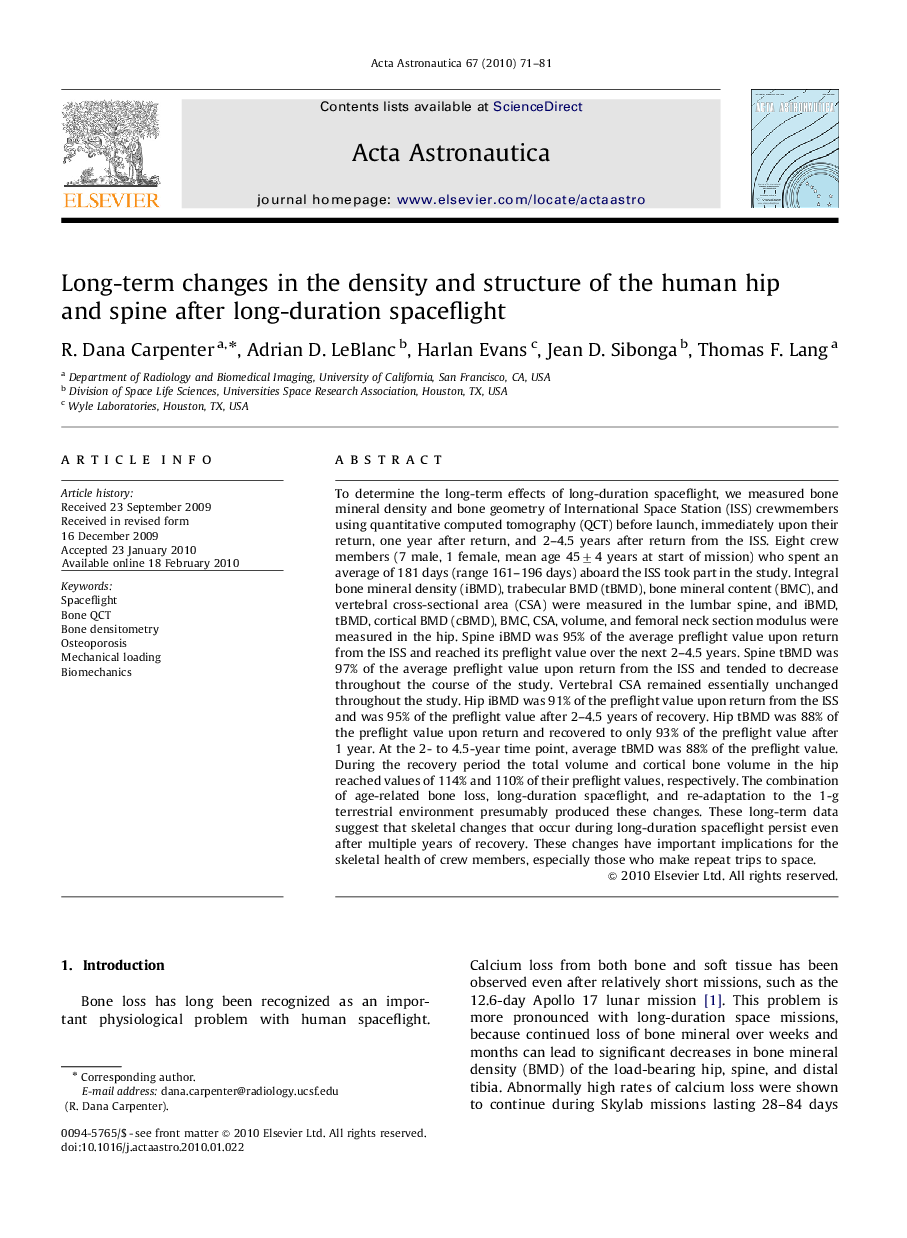| کد مقاله | کد نشریه | سال انتشار | مقاله انگلیسی | نسخه تمام متن |
|---|---|---|---|---|
| 1715989 | 1519996 | 2010 | 11 صفحه PDF | دانلود رایگان |

To determine the long-term effects of long-duration spaceflight, we measured bone mineral density and bone geometry of International Space Station (ISS) crewmembers using quantitative computed tomography (QCT) before launch, immediately upon their return, one year after return, and 2–4.5 years after return from the ISS. Eight crew members (7 male, 1 female, mean age 45±4 years at start of mission) who spent an average of 181 days (range 161–196 days) aboard the ISS took part in the study. Integral bone mineral density (iBMD), trabecular BMD (tBMD), bone mineral content (BMC), and vertebral cross-sectional area (CSA) were measured in the lumbar spine, and iBMD, tBMD, cortical BMD (cBMD), BMC, CSA, volume, and femoral neck section modulus were measured in the hip. Spine iBMD was 95% of the average preflight value upon return from the ISS and reached its preflight value over the next 2–4.5 years. Spine tBMD was 97% of the average preflight value upon return from the ISS and tended to decrease throughout the course of the study. Vertebral CSA remained essentially unchanged throughout the study. Hip iBMD was 91% of the preflight value upon return from the ISS and was 95% of the preflight value after 2–4.5 years of recovery. Hip tBMD was 88% of the preflight value upon return and recovered to only 93% of the preflight value after 1 year. At the 2- to 4.5-year time point, average tBMD was 88% of the preflight value. During the recovery period the total volume and cortical bone volume in the hip reached values of 114% and 110% of their preflight values, respectively. The combination of age-related bone loss, long-duration spaceflight, and re-adaptation to the 1-g terrestrial environment presumably produced these changes. These long-term data suggest that skeletal changes that occur during long-duration spaceflight persist even after multiple years of recovery. These changes have important implications for the skeletal health of crew members, especially those who make repeat trips to space.
Journal: Acta Astronautica - Volume 67, Issues 1–2, July–August 2010, Pages 71–81